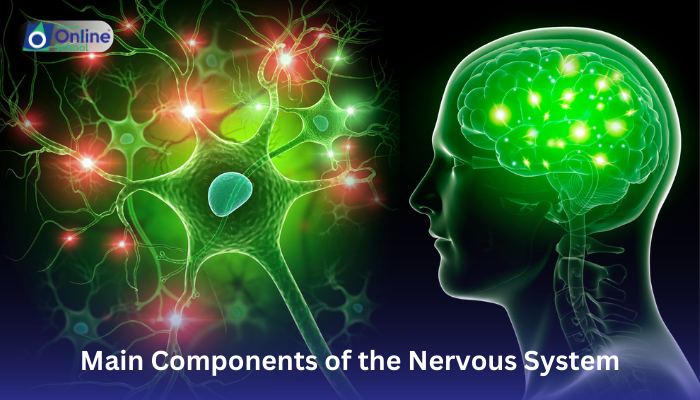
Learning Outcomes:
i. Identify and describe the two main divisions of the nervous system: Central Nervous System (CNS) and Peripheral Nervous System (PNS).
ii. Explain the functions and key components of the Central Nervous System (CNS).
iii. Differentiate between the Somatic Nervous System and the Autonomic Nervous System within the Peripheral Nervous System (PNS).
Introduction:
Imagine a vast orchestra, where every instrument plays a vital role in creating a masterpiece. Our nervous system is just like that – a complex network of specialized cells working together to conduct the symphony of our lives. In this lesson, we'll step backstage and explore the main components of this incredible orchestra, understanding how they work together to keep us moving, feeling, and thinking.
i. The Two Grand Sections: Central and Peripheral
Our nervous system can be broadly divided into two major parts:
Central Nervous System (CNS): This is the brain and spinal cord, the command center where information is processed, decisions are made, and instructions are sent out. Imagine the CNS as the conductor, reading the score, interpreting the music, and guiding the entire orchestra.
Peripheral Nervous System (PNS): This is the network of nerves that carry messages to and from the CNS, connecting it to every part of the body. Think of the PNS as the musicians, each playing their specific instrument to create the overall sound.
ii. The Brain: The Maestro Within
The brain is the star of the CNS show. It's divided into different regions, each with its own specialization:
Cerebrum: The largest part, responsible for thinking, learning, memory, and sensory processing. Imagine it as the lead violinist, setting the tone and melody of the performance.
Cerebellum: Coordinates movement and balance. Think of it as the percussionist, keeping the rhythm steady and smooth.
Brainstem: Controls vital functions like breathing, heart rate, and sleep. Think of it as the conductor's assistant, ensuring the basic rhythm and harmony of the music.
iii. The Spinal Cord: The Information Highway
The spinal cord acts as a communication channel, carrying messages between the brain and the rest of the body. It has two main functions:
Ascending tracts: Carry sensory information from the body to the brain. Imagine these as the rising notes, carrying messages about the world around you.
Descending tracts: Carry motor commands from the brain to the muscles. Think of these as the falling notes, guiding your movements and actions.
iv. The Peripheral Nervous System: Reaching Every Corner
The PNS is further divided into two main branches:
Somatic Nervous System: Controls voluntary movements and gathers sensory information from the external environment. Imagine it as the wind instruments, responding directly to the conductor's instructions and sending out melodies of action and sensation.
Autonomic Nervous System: Regulates involuntary functions like heart rate, digestion, and blood pressure. Think of it as the string section, quietly but constantly providing the background harmony and keeping the orchestra functioning smoothly.
The nervous system, with its intricate components and coordinated functions, is truly an orchestra of life. Understanding its main parts helps us appreciate its remarkable complexity and how it allows us to interact with the world, feel emotions, and experience the full spectrum of being human. From the brain's masterful conducting to the spinal cord's information highway, and the PNS's diverse instruments, each component plays a vital role in the symphony of our lives. So, the next time you take a breath, feel a touch, or form a thought, remember the silent orchestra within, working tirelessly to keep the music of your being playing in perfect harmony.